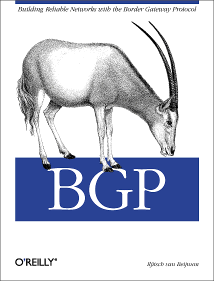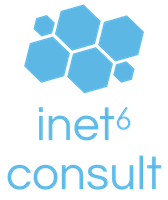
|

|

|
|
Home ·
BGP Expert Test ·
What is BGP? ·
BGP Vendors ·
Links ·
Archives ·
Books ·
My New BGP Book | ||
 (advertisement)
(advertisement)
| ||
|
RIPE 46 Wednesday - Routing, IPv6 (posted 2003-09-16)
WednesdayRoutingWednesday brought sessions about my two favorite subjects: routing and IPv6. However, I didn't find most of the routing subjects very interesting: RIS Update, Verification of Zebra as a BGP Measurement Instrument, Comparative analysis of BGP update metrics. The last one sounds kind of interesting but it comes down to a long analysis of what you get when you compare BGP updates gathered at different locations such as the Amsterdam Internet Exchange looking glass and the Oregon Internet Exchange Route Views.Yesterday's presentation in the routing wg about bidirectional forwarding detection (that I completely forgot about during all the train rerouting) was much more interesting. Daves Katz and Ward wrote an Internet Draft draft-katz-ward-bfd-01.txt for a new protocol that makes it possible for routers to check whether the other side is still forwarding. This goes beyond the link keepalives that many protocols employ, because it also tests if there is any actual forwarding happening. And the protocol works for unidrectional links and to top it all off, it works at millisecond granularity. There is a lot of interest in this protocol, so there is considerable pressure to get it finished soon. But wednesday's routing session wasn't a complete write-off as Pascal Gloor presented the Netlantis Project. This is a collection of BGP tools. Especially the Graphical AS Matrix Tool is pretty cool: it shows you the interconnections between ASes. I'm not exactly sure how it decides which ASes to include, but it still provides a nice overview.
IPv6In the afternoon there was the IPv6 working group session which conflicted with the Technical Security working group session which I would also have liked to attend...
 Kurtis Lindqvist presented an IETF multi6 wg update. Gert Doering talked about the IPv6 routing table. Apart from the size, there are some notable differences with IPv4: IPv6 BGP interconnection doesn't reflect business relationship or anything close to physical topology: people are still giving away free IPv6 transit and tunneling all over the place. This is getting better, though. (The problem with this is that you get lots of routes but no way to know in advance which are good. Nice to have free transit, not so nice when it's over a tunnel spanning the globe.) There are now nearly 500 entries in the global IPv6 table, which is nearly twice as much as two years ago. About half of those are /32s from the RIRs (2001::/16 space), and the rest more or less equally distributed over /35s from the RIRs and /24s, /28s and /32s from 6bone space (3ffe::/16). I'm not sure if it was Gert, but someone remarked during a presentation: "In Asia, they run IPv6 for production. In Europe, they run it for fun. In the US, they don't run it at all." Jeroen Massar talked about "ghost busting". When the Regional Internet Registries started giving out IPv6 space, they assigned /35s to ISPs. Later they changed this to /32s. The assignments were done in such a way that an ISP could simply change their /35 announcement to a /32 announcement "in place". However, this is not entirely without its problems as the BGP longest match first rule dictates that a longer prefix is always preferred (such as a /35 over a /32), regardless of the AS path length or other metrics. With everyone giving away free transit, there are huge amounts of potential longer paths that BGP will explore before the /35 finally disappears from the routing table and the /32 is used. To add insult to injury, there appear to be bugs that make very long AS paths stay around when they should have disappeared. These are called "ghosts" so hence the ghost busting. See the Ghost Route Hunter page for more information.
|
